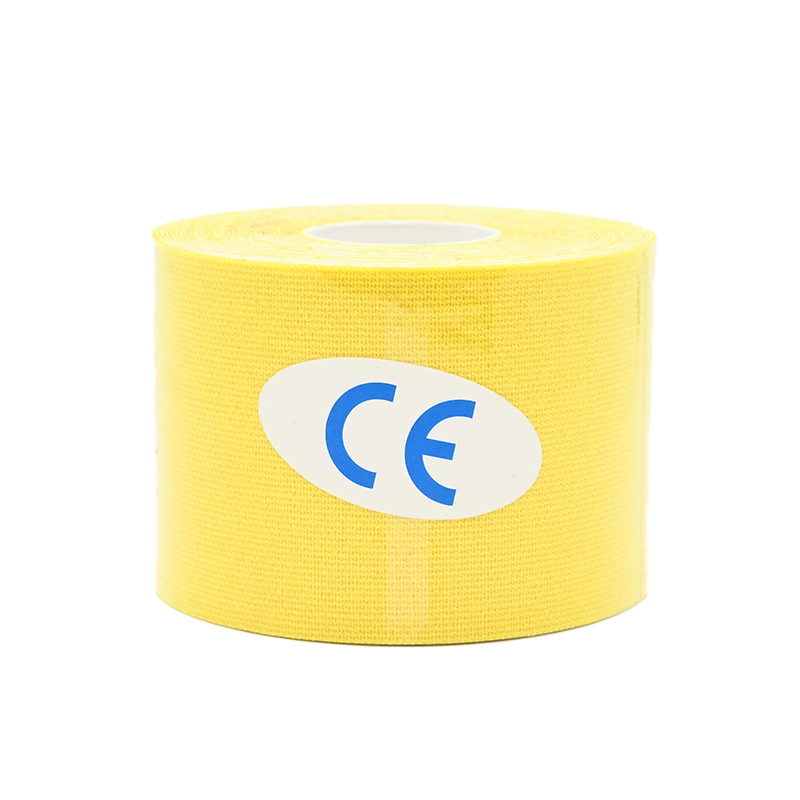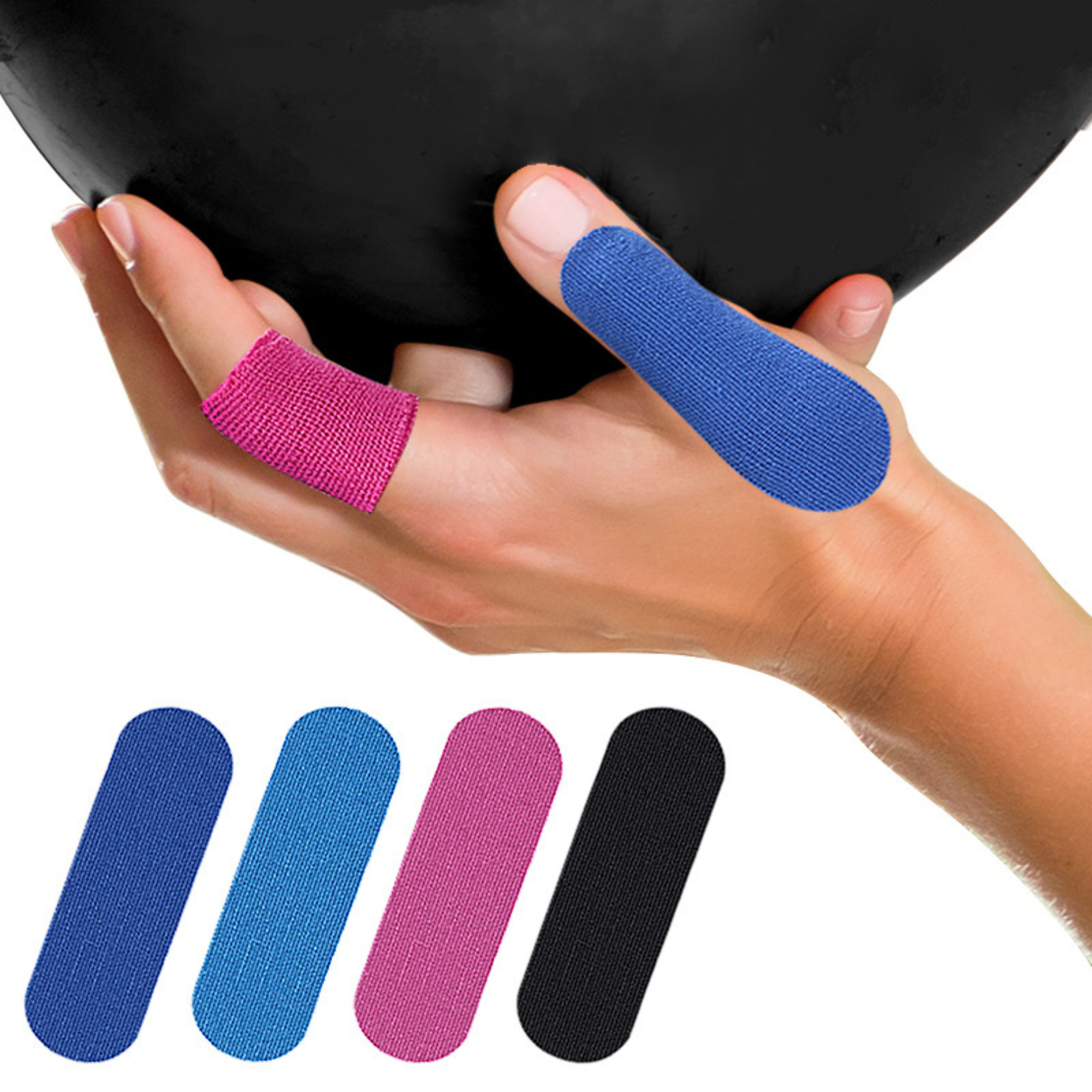News

How does kinesiology tape work—what physiological mechanisms does it rely on?
If you’ve watched elite athletes compete in recent years, from Olympic volleyball players to marathon runners, you’ve likely seen a common sight: vibrant strips of tape adorning shoulders, knees, and backs. This is kinesiology tape, a therapeutic tool that has moved from the clinic to the mainstream. But what is actually happening beneath those colorful patterns? Contrary to popular belief, the tape isn’t designed to immobilize or tightly support a joint like traditional athletic tape. Instead, its proposed effects are far more subtle and neurological. This article delves into the science behind kinesiology tape, exploring the key physiological mechanisms it is theorized to rely on, such as neuromuscular facilitation, sensory feedback mechanisms, and proprioceptive input.
Beyond the Sticky Surface: What is Kinesiology Tape?
First, it’s crucial to understand what sets kinesiology tape apart. Traditional rigid athletic tape is used to restrict movement and provide maximum support, often at the expense of range of motion. Kinesiology tape, however, is thin, elastic, and cotton-based, designed to mimic the elasticity of human skin. It can be stretched to 120-140% of its original length and recoils back, which is fundamental to its proposed function. It is applied in specific configurations or “taping techniques” tailored to individual goals, whether for pain modulation, edema management, or performance enhancement.
The overarching theory is that kinesiology tape works primarily by interacting with the body’s sensory system, not by providing meaningful mechanical support. Its mechanisms are best explained through several interconnected physiological theories.
Mechanism 1: Neurosensory Modulation and Pain Gate Theory
One of the most well-supported explanations for kinesiology tape’s effect on pain is the Gate Control Theory of pain, proposed by Ronald Melzack and Patrick Wall in 1965.
The Theory: The theory suggests that the spinal cord contains a neurological “gate” that either allows pain signals to reach the brain or blocks them. This gate can be closed by stimulating non-painful nerve fibers (large-diameter A-beta fibers), which interfere with and slow down the transmission of pain signals from small-diameter nerve fibers (A-delta and C fibers).
How Tape Interacts: When kinesiology tape is applied to the skin, its unique elasticity creates a subtle lifting effect on the epidermis. This gentle, constant tension stimulates mechanoreceptors (sensors for touch and pressure) in the skin and underlying tissues. This stimulation activates the large A-beta fibers, which “close the gate” on the pain pathways, effectively reducing the perception of pain. It doesn’t heal the underlying injury; rather, it tricks the brain into receiving fewer pain signals, creating an analgesic effect without medication.
This mechanism provides a plausible explanation for the immediate pain relief many users report, making it a potential tool for managing myofascial pain syndromes and acute musculoskeletal discomfort.
Mechanism 2: Enhancing Circulation and Lymphatic Drainage
The iconic “fan” or “web” pattern you often see taped over swollen areas is specifically designed to address fluid buildup. The proposed mechanism here involves enhancing interstitial fluid movement and lymphatic drainage.
The Lifting Effect: As the elastic tape recoils after application, it gently lifts the skin away from the underlying fascia and muscle tissue. This is visible as slight convolutions or wrinkles in the skin between the tape strips.
Creating Space: This microscopic lifting is thought to decompress the tissues beneath, creating tiny spaces between the skin and the subcutaneous tissue. This reduced pressure may:
Improve the flow of blood in the superficial capillaries, bringing oxygen and nutrients to the area.
Create channels for lymphatic flow dynamics, allowing excess interstitial fluid (edema) and inflammatory byproducts to be drained away more efficiently toward lymph nodes.
While this is a popular theory, the scientific evidence supporting significant measurable changes in circulation or swelling is mixed. Some studies show positive outcomes in post-operative swelling, while others show minimal effect. The impact may be more pronounced in superficial edema than in deep, acute traumatic swelling.
Mechanism 3: Proprioception and Neuromuscular Feedback
Perhaps the most significant and accepted mechanism is kinesiology tape’s impact on proprioceptive feedback. Proprioception is your body’s ability to sense its position, movement, and force in space—a “sixth sense” for movement controlled by sensory receptors in your muscles, joints, and skin.
Stimulating Mechanoreceptors: The skin is rich with mechanoreceptors (like Ruffini endings and Pacinian corpuscles) that detect touch, pressure, vibration, and skin stretch. The constant tactile input from the tape and the tension from its elastic recoil provide a continuous stream of sensory information to the central nervous system (CNS).
Enhancing Body Awareness: This added sensory input is believed to heighten body awareness (kinesthesia). For an athlete with a previously injured ankle, the tape’s feedback can subconsciously cue them to avoid potentially unstable positions. For someone with shoulder impingement, the sensation of the tape can remind them to maintain better posture and scapular positioning, thereby improving movement patterning.
This doesn’t mean the tape makes muscles stronger. Instead, it may improve the efficiency and quality of movement by providing a “sensory tap on the shoulder,” reminding the nervous system to engage the correct muscles at the right time. This is why it’s often used for motor control retraining and facilitation of weakened muscles.

Mechanism 4: Fascial Line Manipulation and Tissue Glide
This mechanism connects the tape’s application to the fascial system, a continuous web of connective tissue that surrounds and connects every muscle, bone, nerve, and organ in the body.
The Fascial Network: The fascia is designed to allow muscles and tissues to glide smoothly against each other during movement. Injury, inflammation, or surgery can cause restrictions or adhesions in this fascial network, leading to pain and limited motion.
Directing Tension: When elastic tape is applied from the origin of a problem to its insertion, the recoil tension is theorized to create a directional pull on the skin and superficial fascia. This is thought to:
Encourage better fascial glide and alignment between fascial layers.
Reduce mechanical stress on painful or restricted tissues by “unloading” them.
Influence the tension across entire myofascial chains, potentially affecting areas far from the tape application site.
While fascial research is evolving, this mechanism suggests that kinesiology tape may help normalize soft tissue function and reduce restrictive barriers to movement.
Managing Expectations: What Does the Science Actually Say?
It is vital to approach kinesiology tape with a balanced, evidence-based perspective.
Strongest Evidence: The most consistent research support is for its role in pain modulation (via Gate Control Theory) and immediate improvements in joint position sense and range of motion. Its effects are primarily neurosensory.
Mixed Evidence: Studies on its ability to reduce edema, enhance muscle strength, or significantly improve athletic performance are less conclusive. Many studies show a strong placebo effect—the belief that the tape will work can itself lead to real, measurable improvements.
It’s a Tool, Not a Cure: Kinesiology tape is not a magic bullet. It will not heal a torn ligament or fix dysfunctional movement patterns on its own. Its greatest utility is as an adjunct to a comprehensive rehabilitation program that includes strength training, mobility work, and motor control exercises. It can help manage pain and facilitate better movement while the underlying cause is addressed.
Conclusion: A Symphony of Subtle Sensory Signals
So, how does kinesiology tape work? The answer is not found in one single grand mechanism, but in a symphony of subtle, interconnected physiological processes. It does not act like a brace or a bandage. Instead, it functions as a sophisticated sensory tool, interacting with the body’s intricate nervous system.
Its primary mechanisms are:
Modulating pain by stimulating sensory nerves to “close the gate” on pain signals.
Potentially aiding fluid dynamics by creating space for improved lymphatic and circulatory flow.
Enhancing proprioception by providing constant feedback to the brain about body position and movement, aiding in motor control recruitment.
Influencing fascial tissue to encourage normal glide and reduce tissue tension.
The power of kinesiology tape lies in its ability to influence the communication between the skin, the nervous system, and the brain. By managing pain and enhancing body awareness, it can help break cycles of pain and inhibition, allowing individuals to move with more confidence and comfort during the healing and training process. While more high-quality research is always needed, the existing science points to a valuable, non-invasive tool in the vast toolkit of sports medicine and rehabilitation.

- ASHER.CAO:+86-176 2548 7782 Asher.cao@healthline-medical.com
- HARONJU:+86-198 5296 4937 haronju@healthline-medical.com
- DI.TIAN:+86-183 0527 6521 Di.tian@healthline-medical.com
- Tel:+86-512-6289 3223
- Mob:+86-176 2548 7782 / +86-198 5296 4937 / +86-183 0527 6521
-
Email:zhujun@healthline-medical.com
sales@healthline-medical.com
- Whatsapp / Wechat:+86-176 2548 7782 ; +86-198 5296 4937; +86-183 0527 6521
- Skype:+86-176 2548 7782 / +86-183 0527 6521
Copyright © 2025 SUZHOU HEALTHLINE MEDICAL PRODUCTS CO., LTD
All Rights Reserved.

The information provided on this website is intended for use only in countries and jurisdictions outside of the People's Republic of China.


 English
English Español
Español русский
русский عربى
عربى











